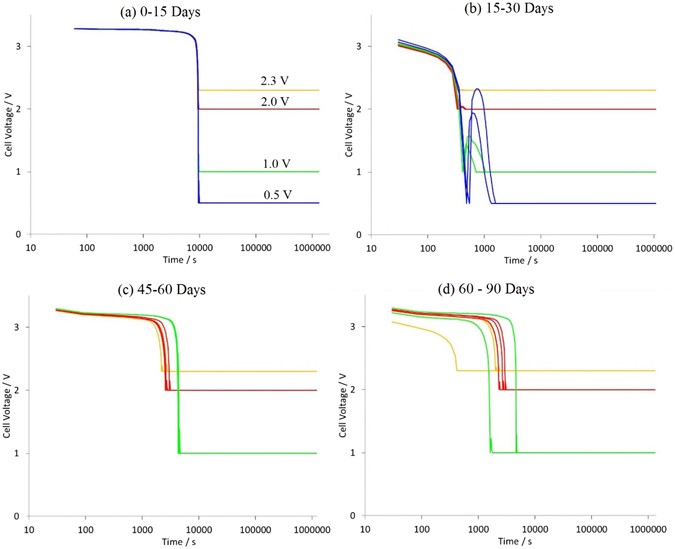Hans Kroeger
New Member
- Joined
- Dec 30, 2020
- Messages
- 128
Hi there,
Quote: Neither ISCr nor capacity fading occurs if the overdischarge is terminated before −12% SOC, where the first platform after the minimum voltage is located.
Unquote
I found this statement here: https://www.nature.com/articles/srep30248
From the above I concluded, that overdischarging an NMC Litium cell all the way down to zero volts does not harm the cell.
Wat about LiFePO4 cells?
Searching for papers I found only statements like: discharging LiFePO4 cells below 2 Volts will result in permanent damage.
I took a Headway LiFePO4 cell, discharged it to 0 Volts, left it there for a while, then recharged it. I could not find any loss of capacity afterwards.
So my question is: what is the effect on a LiFePO4 cell when overdischarging it to 0 Volts.?
thanks for any answer,
Servus Hans
Quote: Neither ISCr nor capacity fading occurs if the overdischarge is terminated before −12% SOC, where the first platform after the minimum voltage is located.
Unquote
I found this statement here: https://www.nature.com/articles/srep30248
From the above I concluded, that overdischarging an NMC Litium cell all the way down to zero volts does not harm the cell.
Wat about LiFePO4 cells?
Searching for papers I found only statements like: discharging LiFePO4 cells below 2 Volts will result in permanent damage.
I took a Headway LiFePO4 cell, discharged it to 0 Volts, left it there for a while, then recharged it. I could not find any loss of capacity afterwards.
So my question is: what is the effect on a LiFePO4 cell when overdischarging it to 0 Volts.?
thanks for any answer,
Servus Hans



